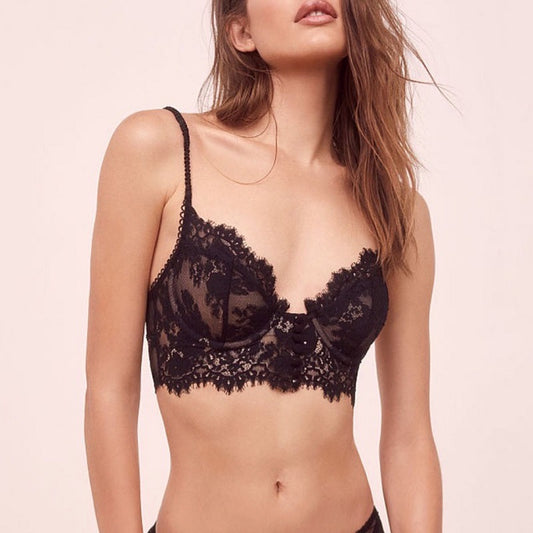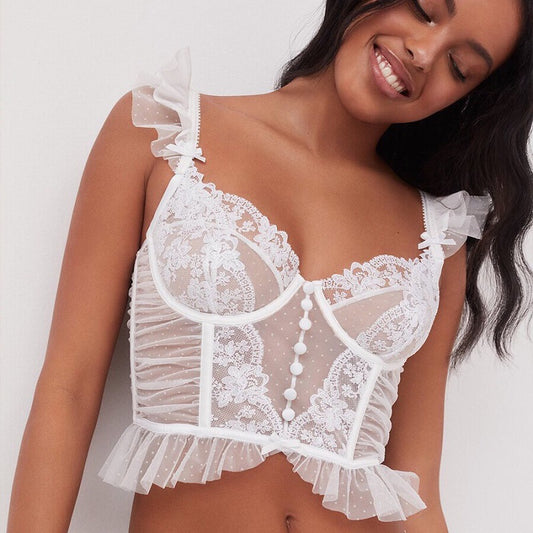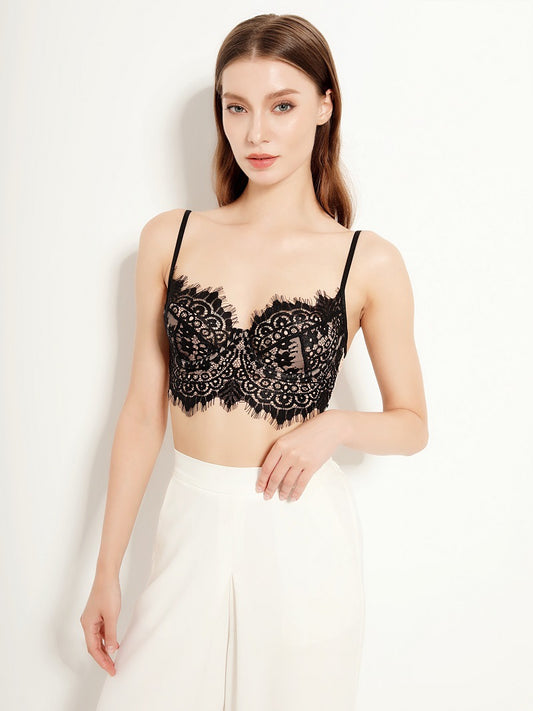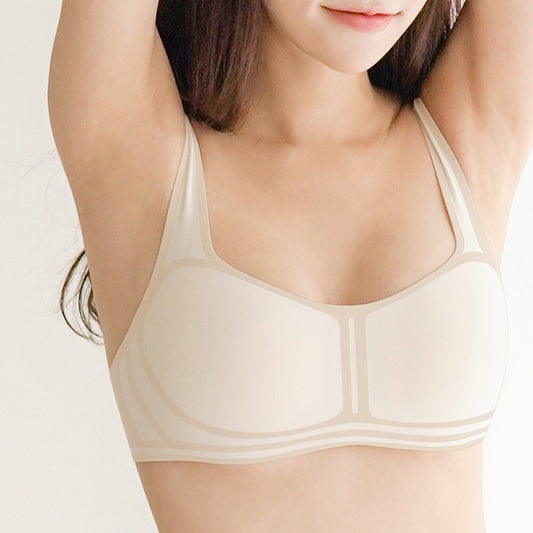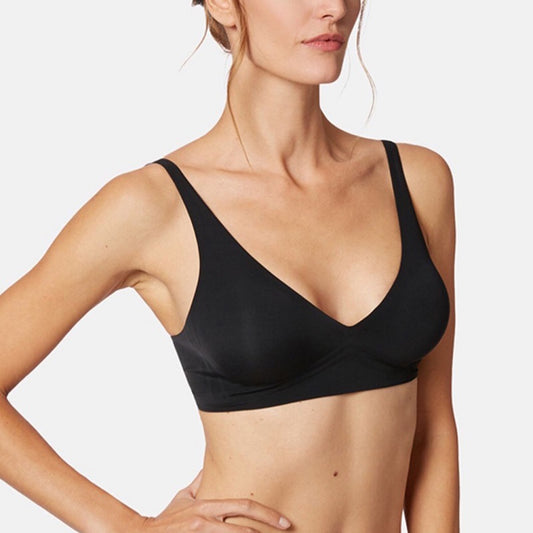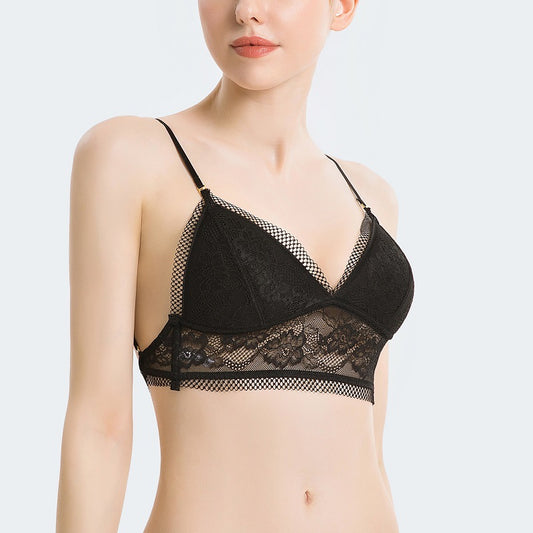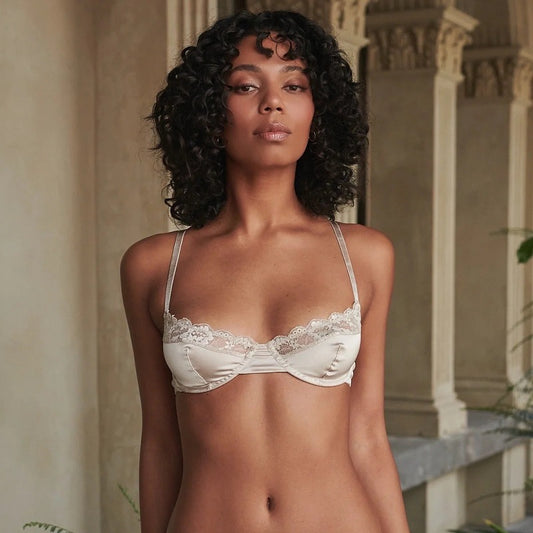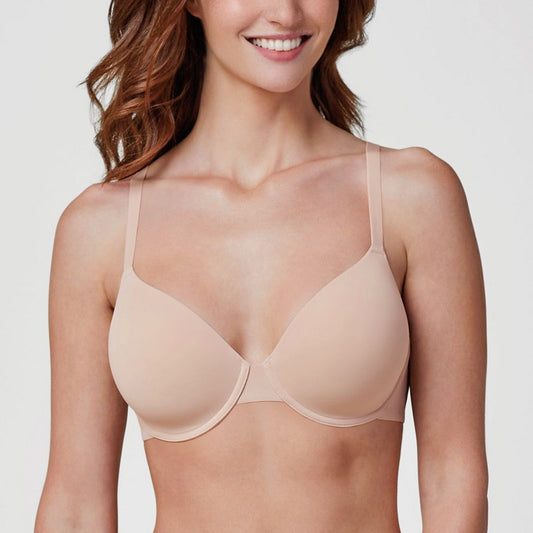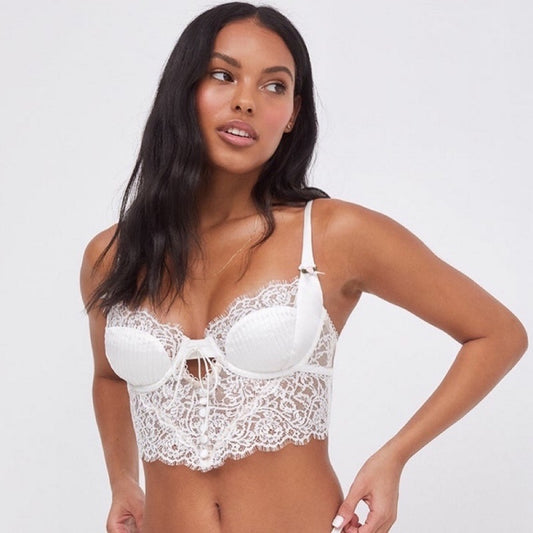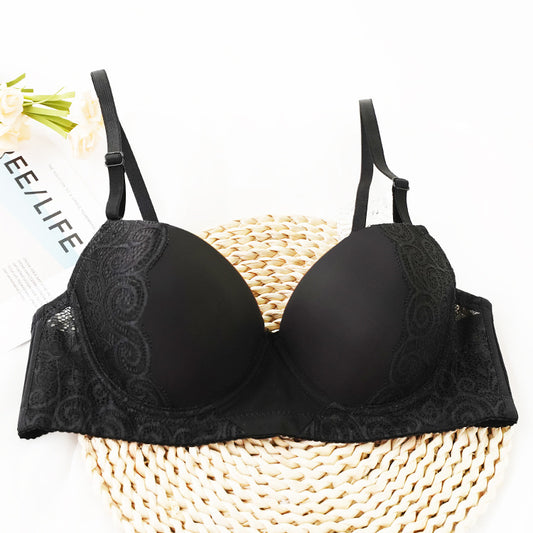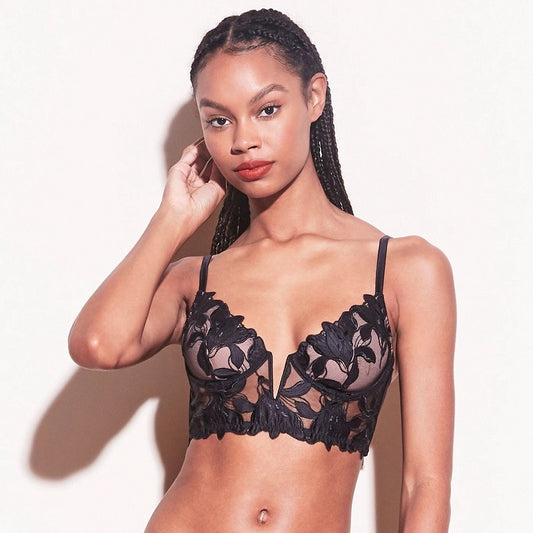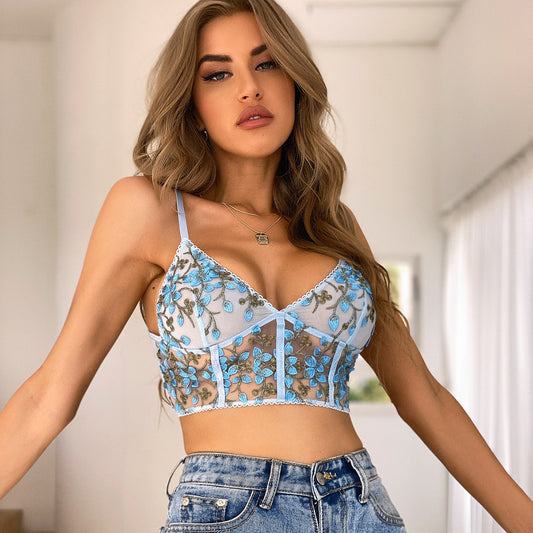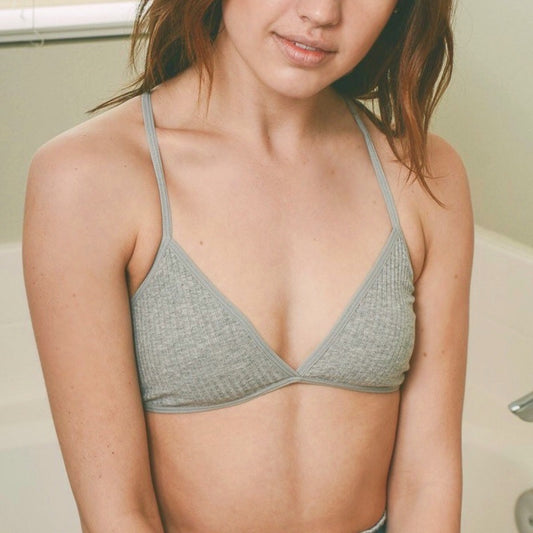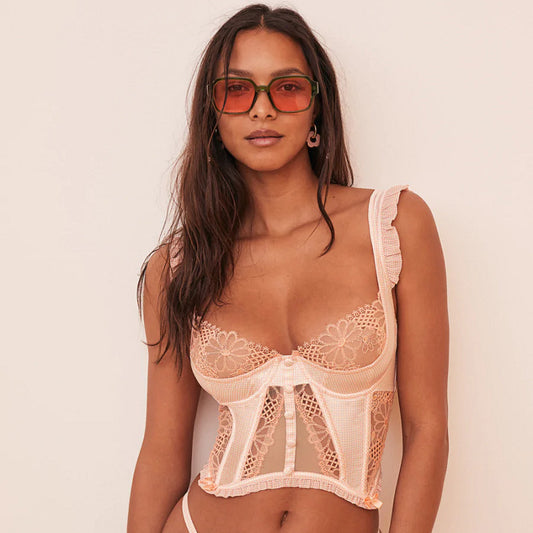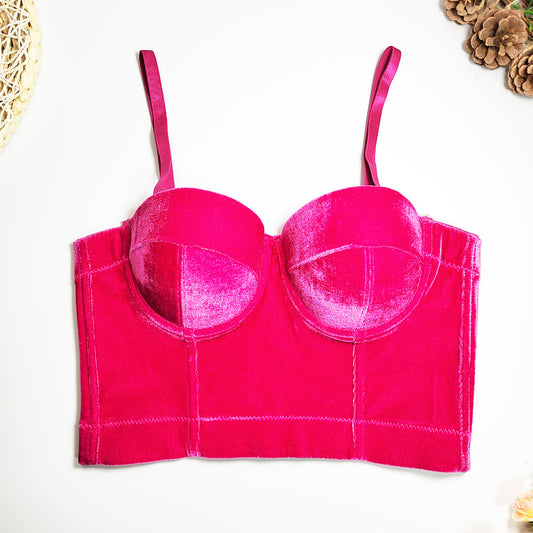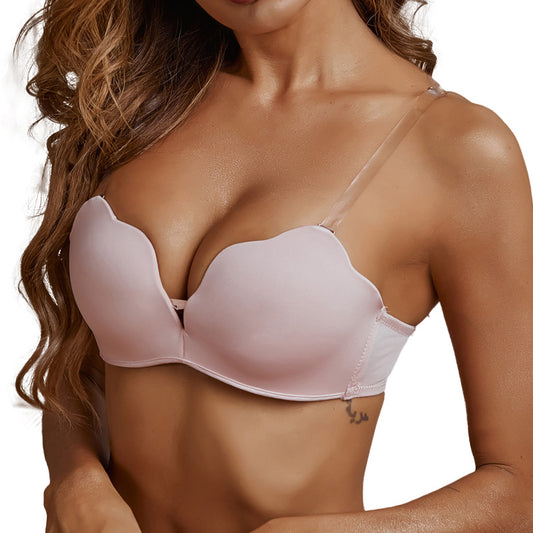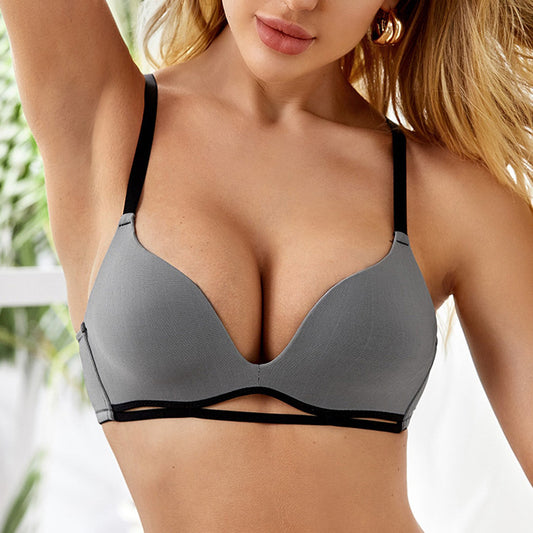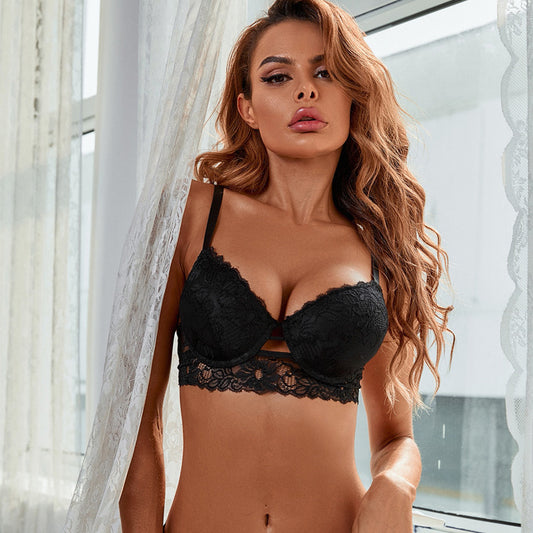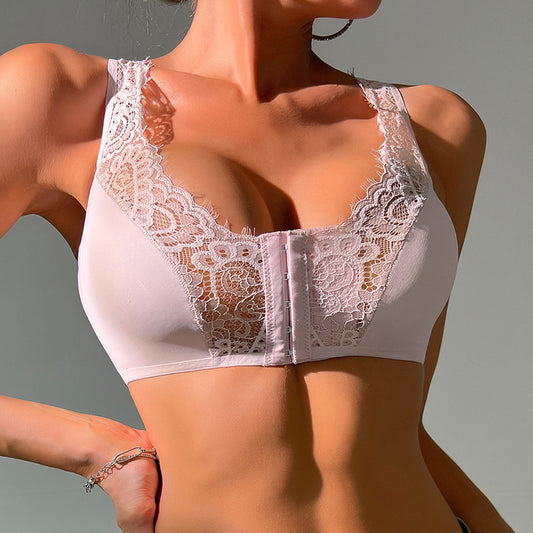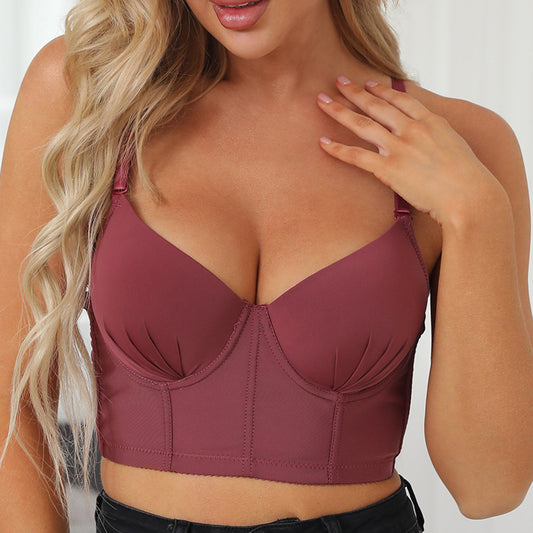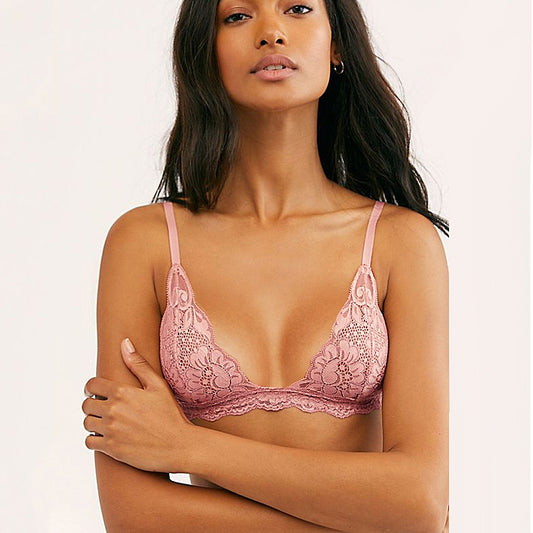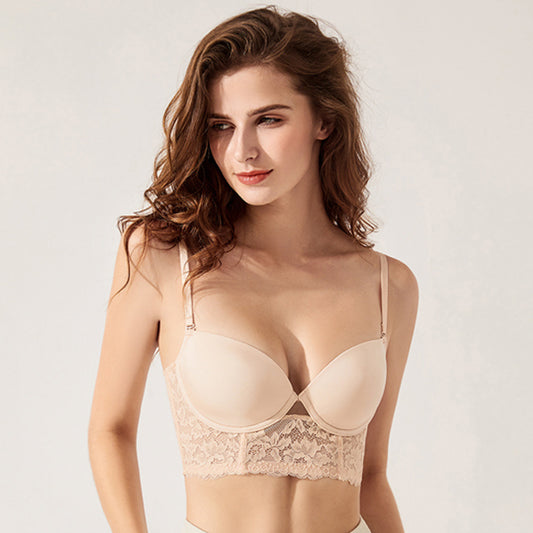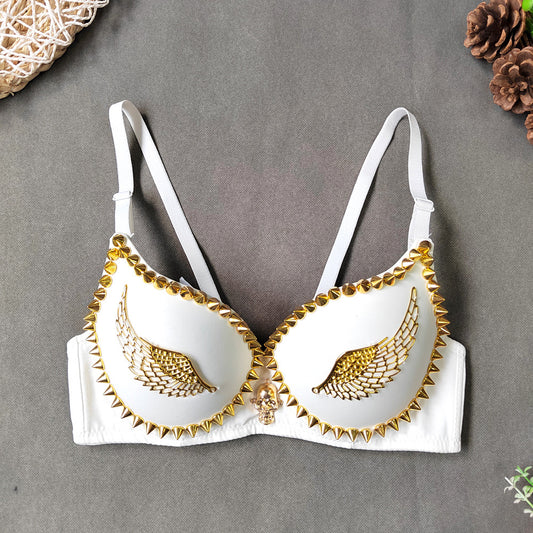-
French Eyelash Lace Sexy Beauty Back Ultra-Thin Bra with Steel Ring
Regular price $39.00 USDRegular priceUnit price / per$39.00 USDSale price $39.00 USD -
Ultra-Thin Big Chest Small Push up Boning Corset
Regular price $51.00 USDRegular priceUnit price / per$51.00 USDSale price $51.00 USD -
Small Sling Lace Sexy Lingerie Soft Underwire Push up Big Chest Show Small Thin U Shaped Backless Bra
Regular price $29.00 USDRegular priceUnit price / per$29.00 USDSale price $29.00 USD -
Korean Seamless Thin Small Breast Push up Wireless Soft Support Square Collar Tube Top Jelly Bra
Regular price $31.00 USDRegular priceUnit price / per$31.00 USDSale price $31.00 USD -
Seamless Nude Feel Underwear 3D Wireless Soft Support Thin Small Breast Push up Comfort Jelly Bra
Regular price From $31.00 USDRegular priceUnit price / per$31.00 USDSale price From $31.00 USD -
French Sexy U-Shaped Beauty Back Wireless Thin Bra
Regular price $26.00 USDRegular priceUnit price / per$26.00 USDSale price $26.00 USD -
Elastic Satin Satin Lace Edge Sexy Bra
Regular price $38.00 USDRegular priceUnit price / per$38.00 USDSale price $38.00 USD -
Big Outer Expansion Waist Thin Latex Inner Cushion Soft Underwire Push up Bra
Regular price $38.00 USDRegular priceUnit price / per$38.00 USDSale price $38.00 USDSold out -
Body Shaping Thin Push up Hollow Out Cutout Long Back Bra
Regular price $52.00 USDRegular priceUnit price / per$52.00 USDSale price $52.00 USD -
Lace Sexy Lingerie Sexy Steel Ring Moderate Lift Lace Bra
Regular price $18.00 USDRegular priceUnit price / per$18.00 USDSale price $18.00 USD -
Deep V Plunge Steel Ring Push up Accessary Breast Push up Ultra-Thin Yarn Bra
Regular price $35.00 USDRegular priceUnit price / per$35.00 USDSale price $35.00 USD -
Sexy Underwear Mesh Lace Top Sexy Vest
Regular price $20.00 USDRegular priceUnit price / per$20.00 USDSale price $20.00 USD -
Ultra Thin Cotton Thread Criss Cross Back Triangle Cup Wireless Comfortable Breathable Bra
Regular price $10.00 USDRegular priceUnit price / per$10.00 USDSale price $10.00 USDSold out -
French Lace Sexy Lingerie Vest
Regular price $50.00 USDRegular priceUnit price / per$50.00 USDSale price $50.00 USD -
Real Velvet Spaghetti Straps Outerwear Boning Corset
Regular price $39.00 USDRegular priceUnit price / per$39.00 USDSale price $39.00 USD -
Shoulder Strap Replaceable Two Rows Three Buckles Push up Bra
Regular price $18.00 USDRegular priceUnit price / per$18.00 USDSale price $18.00 USD -
Comfortable Glossy Three Rows Two Buttons Adjustment French Sexy Push up Bra
Regular price $17.00 USDRegular priceUnit price / per$17.00 USDSale price $17.00 USD -
Sexy Lace Ultrathin Black Girls Push Up Small Breast Size Exaggerating Bra
Regular price $17.00 USDRegular priceUnit price / per$17.00 USDSale price $17.00 USD -
Push up Thin Bra
Regular price $40.00 USDRegular priceUnit price / per$40.00 USDSale price $40.00 USD -
French Lace Thin Gathering Bra
Regular price $27.00 USDRegular priceUnit price / per$27.00 USDSale price $27.00 USD -
C Cup Push up Thin Bra with Steel Ring
Regular price $18.00 USDRegular priceUnit price / per$18.00 USDSale price $18.00 USD -
Sexy Lace Triangle Cup Bra
Regular price $51.00 USDRegular priceUnit price / per$51.00 USDSale price $51.00 USD -
Lace Crocheted Big Chest Show Small Bra
Regular price $36.00 USDRegular priceUnit price / per$36.00 USDSale price $36.00 USD -
Golden Angel Wings Beaded Corset Short Chest Seamless Bare Back Body Shaping Bullet Tube Top
Regular price $37.00 USDRegular priceUnit price / per$37.00 USDSale price $37.00 USD
Collection: Bras
Bras as an Essential Foundation
Bras are basic but vital. They help support the bust, which reduces pressure on your back and shoulders. By measuring under your bust and around the fullest part of your chest, you can find a suitable band and cup size. This approach stops many fit problems. In fact, research shows about 80% of people wear the wrong size. That surprising figure reveals why it’s wise to check your measurements at least once a year. Many sellers carry more than 90 size options, starting from a 28 band and reaching up to 56. Cup volumes span from AA to O. Buyers often seek lasting comfort, reliable design, and attractive looks. These goals drive both global brands and specialized shops to create new models.
A Short Historical View
The modern bra is an underclothing item meant to offer support and shape. In 1914, Mary Phelps Jacob patented a simpler design than corsets. Over the next century, this garment grew into a huge industry. In 2021, the worldwide bra market was worth around 19.6 billion USD. Analysts forecast it could reach 25.4 billion USD by 2025. This rising demand is linked to better fit, fresh materials, and broader size availability. Many people change out older pieces after about 8 to 12 months of frequent use. It’s also common to have around 9 different bras on hand for various outfits and needs.
The Value of Correct Measurements
To find a well-fitting bra, start with the band size. Take a tape and wrap it snugly around the chest, right under your bust. In many systems, this could be anywhere from 28 to 56 inches. The difference between this underbust figure and the fullest part of the bust points to your cup size. Some shops now include over 94 unique sizes. That variety helps many body types. Experts say a good fit can reduce shoulder and neck pain by up to 70%. Although people often focus on cup letters, about 80% of the overall stability comes from the band. If the band is too loose, it slides up and increases tension on the straps. Straps should only carry around 20% of the bust’s weight. They usually have adjustable sliders for fine-tuning.
Key Steps for Accurate Sizing
- Measure Under the Bust: Hold the tape snugly just under your breasts.
- Measure the Bust: Wrap the tape around the fullest area, without pressing too much.
- Find the Cup: Subtract the underbust from the bust. The difference lines up with a specific cup letter.
- Check the Comfort: Make sure the band lies flat and the cups hold all breast tissue.
Popular Cup Styles and Shapes
Bras come in many forms:
- T-shirt styles: Molded cups ensure a smooth look beneath clothing.
- Push-up designs: Extra padding, placed near the outer edges, can lift and create more cleavage.
- Balconette cuts: Highlight the upper part of the bust but don’t use too much padding.
- Full-coverage types: Enclose more of the breast, cutting down on overflow and boosting support.
Major lingerie retailers report that T-shirt pieces make up about 35% of overall bra sales. Their simple lines and comfort appeal to a wide range of wearers. This popularity drives makers to use lighter foam, spacer fabric, or memory-like inserts that adapt to unique shapes.
Underwire vs. Wire-Free Options
Underwire bras include a curved wire at the base of the cups to lift the bust. However, wire-free pieces have gained attention. They can provide flexibility and lessen the chance of a wire poking. Some surveys find that non-wired designs can reduce spots of pressure. Still, many individuals prefer the shaping that a wired bra can give. Some newer designs mix these methods by including flexible side panels and foam supports. The decision depends on personal taste, bust shape, and daily activities.
Sports Bras and Movement Control
Sports bras focus on limiting bounce during active moments. Experts say that running can produce up to 14 centimeters of breast movement if there is no support. Good compression or encapsulation can lower that by up to 74%. These special pieces often come in three main levels of support:
- Low-impact: Gentle sessions like yoga or stretching.
- Medium-impact: Activities such as brisk walking or cycling.
- High-impact: Running or intense aerobics, requiring sturdier straps and moisture-wicking material.
Many big activewear brands, which make up around 20% of total sports bra sales, add mesh panels for extra airflow. These details help buyers choose a bra that matches their exercise routines.
Nursing Bras: Practical Elements
Nursing bras are made to help breastfeeding parents. They commonly include clip-down cups or fronts that fold over. This design lets a parent feed their child without fully removing the bra. Some models have removable pads for leaks and comfort. Also, band extenders can handle changing sizes after pregnancy.
Health experts say a properly fitted nursing bra can prevent blocked milk ducts. This is because a bra that fits well avoids pressing on breast tissue. Many nursing items feature wider straps and enhanced side panels for more stability. Sizes can range from 30B to 46H in many shops, providing choices for different body changes after birth.
Plus-Size Bras: Extra Reinforcement
Plus-size bras add strength for fuller busts. Brands often include power mesh in the wings (the fabric on the sides) for firm support. Extra hook-and-eye closures, sometimes three or four rows, keep the bra snug. Wider straps help curb shoulder pain, a frequent issue for those with bigger cup sizes.
Reports suggest that plus-size pieces now make up about 16% of global bra purchases. This trend highlights the importance of larger sizes. Modern brands also use special cuts to smooth side bulges and avoid skin irritation. By doing so, they give fuller-busted customers more comfort during day-to-day wear.
Bralettes: A Cozy Alternative
Bralettes are known for a casual, lightweight design. They generally don’t have wires or thick padding, relying on elastic bands and soft materials like cotton or lace. These pieces offer airflow and gentle structure, though they might not match the lift or shape of traditional bras.
Certain bralettes come with removable pads for coverage or shaping needs. Online data reveals that bralette demand has risen by about 25% in the last three years. This jump is linked to work-from-home trends and a shift toward more relaxed clothing.
Fabric Choices and Care
Materials are a big factor when selecting bras. Many everyday items combine nylon (60–80%) with spandex (5–10%) to give stretch and resilience. Cotton suits people with sensitive skin, while polyester works for athletic bras due to its moisture-wicking quality. High-end lines can include silk or specialized lace, but these require gentler cleaning.
To preserve elasticity, experts suggest gentle wash cycles or handwashing with mild soaps, plus air drying instead of using a dryer. This method keeps the bra’s shape and fights odor-causing bacteria, especially after heavy workouts.
Ensuring a Good Fit
Finding the right bra involves more than just reading band and cup sizes. It’s also important to check:
- Band tension: Should be snug but not overly tight.
- Strap placement: Must support around 20% of the breasts’ weight.
- Cup alignment: There should be no gaping or bulging at the edges.
- Center gore contact: The center panel should rest smoothly against the chest.
Visiting a trained fitter at a store can cut mistakes by up to 30%. Some online sellers use quizzes or 3D tools to guide people toward better sizes, taking into account differences in ribcage width and bust shape.
Testing and Pricing
Many big producers run wear tests with real users to rate comfort, durability, and shape retention. Some labs also test fabric strength by stretching it repeatedly. The typical bra weighs between 60 to 80 grams, depending on trims and hardware. In the United States, an average bra might cost around 30 USD. Some basic designs sell for about 15 USD, while designer lines exceed 100 USD. Buyers can choose according to their budget, style, or specific needs.
How Stores Organize Their Bras
Most shops display bras by purpose, brand, or style. Everyday T-shirt versions might be in one section, while sports models sit in an activewear area. Strapless pieces often appear near occasion-focused items. This arrangement helps customers easily locate what they want.
Many retailers also provide:
- Interactive size charts: To assist with picking band and cup measurements.
- Detailed product details: Listing materials, underwire presence, or padding levels.
- Customer feedback: Reviews on how well the bra holds up after many washes.
Reading user opinions can offer insight into color fading, strap dig, or general comfort. That knowledge helps people make a better choice.
Recent Innovations and Features
Brands now add side-smoothing panels, memory foam cups, and bonded seams that reduce visibility under fitted clothes. Some use seamless knitting to eliminate bulky stitches. Others use “cool-touch” linings to pull heat away from the body. This can be helpful in warm climates.
Some lines also add back support features. They help align the upper body, which can be useful for individuals who work long hours at a desk and feel back strain.
Color Selections and Aesthetic Options
Color often depends on personal taste or the need to match certain outfits. Experts usually suggest at least one nude bra to wear under light-colored clothing. Black is a timeless option because it hides stains and pairs with darker shades. White can sometimes show through thinner materials, prompting many shoppers to pick slightly darker nude tones. Vibrant hues and bold prints add variety, especially in seasonal collections. Most online shops let you filter by color, size, and features, making it easier to search.
Our Collection and Customer Experience
We offer 300+ models, covering everyday T-shirt bras, plus-size, sports pieces, bralettes, strapless styles, and nursing items. Each listing includes:
- In-depth size guides: Sharing typical body measurements for each band/cup combination.
- Fabric breakdown: Explaining what materials were used, and whether there’s an underwire or padding.
- Care tips: Encouraging gentle washing to extend the item’s lifetime.
We have a straightforward return policy in case the fit isn’t perfect. Just leave the tags and stickers on until you’re certain. Trying more than one size or style is common, and it can improve your chances of finding a bra that truly fits well.
Prolonging Bra Lifespan
Another factor is maintenance. Switching between two or three bras gives the elastic time to recover. Some specialists note that a frequently worn bra can lose its support after 6 to 9 months. Washing on gentle settings or by hand, using laundry bags, and air drying can prevent bent hooks or damaged lace. This approach helps keep each bra in good shape longer.
Further Insights
Bras play many roles. They can offer daily lift, help during workouts, or serve new parents who need to feed their babies easily. They are a core part of a wardrobe. The best place to start is with correct measurements, making sure the band and cups fit right. New digital fitting methods, like online quizzes, help reduce guesswork. Constant product improvements also address issues like wire pain and inadequate airflow.
Exploring our bra department can lead you to flexible bralettes or strong sports bras, depending on your lifestyle. As the market moves toward a 25.4 billion USD value, we see more emphasis on precise sizing, broad ranges, and longer-lasting materials. By making mindful choices and caring for bras properly, you can enjoy supportive garments that balance function and personal style.

